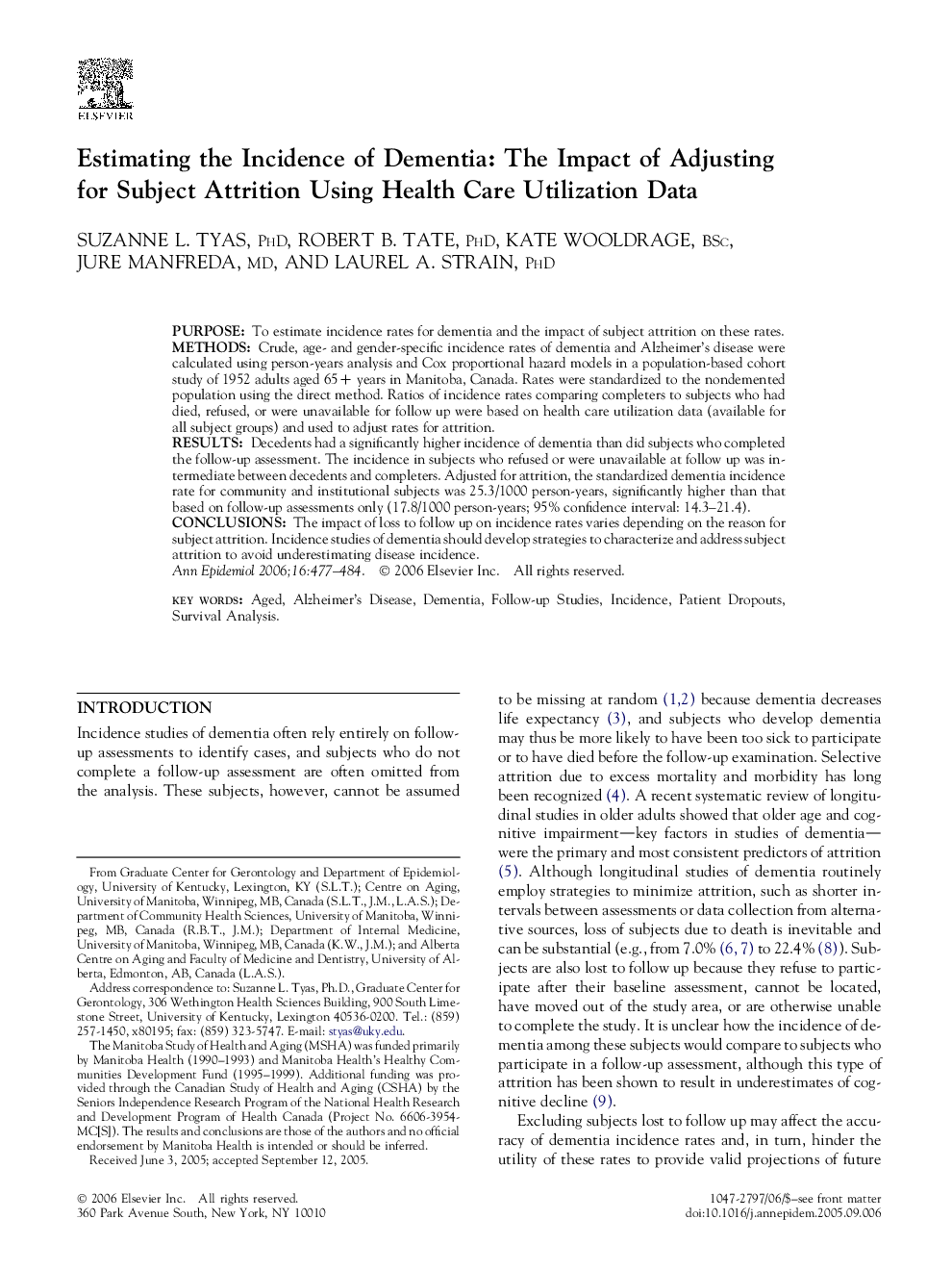| Article ID | Journal | Published Year | Pages | File Type |
|---|---|---|---|---|
| 3445499 | Annals of Epidemiology | 2006 | 8 Pages |
PurposeTo estimate incidence rates for dementia and the impact of subject attrition on these rates.MethodsCrude, age- and gender-specific incidence rates of dementia and Alzheimer's disease were calculated using person-years analysis and Cox proportional hazard models in a population-based cohort study of 1952 adults aged 65+ years in Manitoba, Canada. Rates were standardized to the nondemented population using the direct method. Ratios of incidence rates comparing completers to subjects who had died, refused, or were unavailable for follow up were based on health care utilization data (available for all subject groups) and used to adjust rates for attrition.ResultsDecedents had a significantly higher incidence of dementia than did subjects who completed the follow-up assessment. The incidence in subjects who refused or were unavailable at follow up was intermediate between decedents and completers. Adjusted for attrition, the standardized dementia incidence rate for community and institutional subjects was 25.3/1000 person-years, significantly higher than that based on follow-up assessments only (17.8/1000 person-years; 95% confidence interval: 14.3–21.4).ConclusionsThe impact of loss to follow up on incidence rates varies depending on the reason for subject attrition. Incidence studies of dementia should develop strategies to characterize and address subject attrition to avoid underestimating disease incidence.
